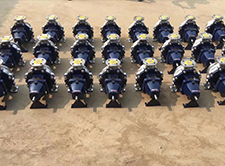Estonian
- Afrikaans
- Albanian
- Amharic
- Arabic
- Armenian
- Azerbaijani
- Basque
- Belarusian
- Bengali
- Bosnian
- Bulgarian
- Catalan
- Cebuano
- Corsican
- Croatian
- Czech
- Danish
- Dutch
- English
- Esperanto
- Estonian
- Finnish
- French
- Frisian
- Galician
- Georgian
- German
- Greek
- Gujarati
- Haitian Creole
- hausa
- hawaiian
- Hebrew
- Hindi
- Miao
- Hungarian
- Icelandic
- igbo
- Indonesian
- irish
- Italian
- Japanese
- Javanese
- Kannada
- kazakh
- Khmer
- Rwandese
- Korean
- Kurdish
- Kyrgyz
- Lao
- Latin
- Latvian
- Lithuanian
- Luxembourgish
- Macedonian
- Malgashi
- Malay
- Malayalam
- Maltese
- Maori
- Marathi
- Mongolian
- Myanmar
- Nepali
- Norwegian
- Norwegian
- Occitan
- Pashto
- Persian
- Polish
- Portuguese
- Punjabi
- Romanian
- Russian
- Samoan
- Scottish Gaelic
- Serbian
- Sesotho
- Shona
- Sindhi
- Sinhala
- Slovak
- Slovenian
- Somali
- Spanish
- Sundanese
- Swahili
- Swedish
- Tagalog
- Tajik
- Tamil
- Tatar
- Telugu
- Thai
- Turkish
- Turkmen
- Ukrainian
- Urdu
- Uighur
- Uzbek
- Vietnamese
- Welsh
- Bantu
- Yiddish
- Yoruba
- Zulu
Telephone: +86 13120555503
Email: frank@cypump.com
juuli . 27, 2024 11:43 Back to list
Exploring the Design and Functionality of Mixed Flow Pump Impellers for Enhanced Efficiency and Performance
Understanding Mixed Flow Pump Impellers
Mixed flow pumps are a critical component in various industrial applications, known for their efficient transfer of fluids under moderate to high heads. The impeller, a central element of these pumps, plays a vital role in determining the pump's performance and efficiency. In this article, we will explore the features and advantages of mixed flow pump impellers, their working principles, and their applications.
What is a Mixed Flow Pump?
A mixed flow pump combines the characteristics of both centrifugal and axial flow pumps. The design enables the fluid to enter the impeller axially and exit radially, which allows for better control over the flow and pressure. This unique mixing of flow patterns results in higher efficiency levels compared to traditional centrifugal or axial pumps.
Design and Features of Mixed Flow Pump Impellers
The mixed flow pump impeller is typically designed with a specific blade angle and curvature to achieve optimal flow characteristics. Its blades allow for an efficient balance between the vertical and horizontal movement of the fluid.
1. Blade Design The blades are often twisted and angled to control the flow direction and facilitate smooth transition from the inlet to the outlet. This design minimizes turbulence and enhances energy transfer.
2. Diameter and Size The size of the impeller affects the pump's capacity and performance. Larger impellers can move more fluid but may require more energy to operate, while smaller impellers are typically more efficient at lower flow rates.
3. Material Construction Mixed flow impellers are usually constructed from high-strength materials to withstand the stresses imposed by the fluid motion, including corrosion-resistant alloys for applications involving harsh chemicals.
Working Principle
When the pump is activated, the motor drives the impeller, causing it to rotate rapidly. The fluid enters the impeller through the eye (central opening), where the centrifugal force generated by the spinning blades propels the fluid outward. The mixed flow design allows the fluid to exit both radially and axially, achieving a balance between flow rate and pressure head.
As the fluid leaves the impeller, it enters the diffuser section, where the velocity decreases, and the pressure increases. This step is critical as it converts the kinetic energy gained in the impeller into pressure energy, which is then used to transport the fluid through the desired system.
mixed flow pump impeller

Advantages of Mixed Flow Pump Impellers
Mixed flow pump impellers offer several benefits
1. Versatile Performance They effectively handle a variety of flow rates and can be adapted for different applications, making them ideal for water supply, irrigation, and various industrial processes.
2. High Efficiency The design of the impeller allows for lower energy consumption while maintaining high operational efficiency, leading to cost savings over time.
3. Reduced Cavitation Risks The unique flow characteristics help minimize cavitation, a common issue in pumps that can lead to severe damage.
4. Noise Reduction Compared to other pump types, mixed flow pumps often operate more quietly, providing a favorable advantage in noise-sensitive environments.
Applications
Mixed flow pump impellers are widely used in various sectors, including
- Municipal Water Supply They efficiently transport large volumes of water to treatment facilities and distribution systems. - Irrigation Farmers utilize mixed flow pumps for irrigation systems due to their ability to handle varying flow rates. - Industrial Processes They are used in cooling systems, chemical processing, and other applications where moderate to high heads are required.
Conclusion
In summary, mixed flow pump impellers are an integral part of the fluid handling industry, providing a combination of high efficiency, adaptability, and reliable performance. Understanding their design and working principles can help in selecting the right pump system for specific applications, ensuring optimal performance and longevity. As technology advances, we can expect further innovations in mixed flow pump design, enhancing their capabilities and applications across various industries.
-
High-Performance Air Pumps for Sand & Gravel | Efficient Transport
NewsAug.03,2025
-
ISG Series Vertical Pipeline Pump - Chi Yuan Pumps Co., LTD.|Energy Efficiency, Corrosion Resistance
NewsAug.03,2025
-
ISG Series Pipeline Pump - Chi Yuan Pumps | Energy Efficiency&Compact Design
NewsAug.03,2025
-
ISG Series Vertical Pipeline Pump - Chi Yuan Pumps Co., LTD.|High Efficiency, Low Noise, Durable
NewsAug.02,2025
-
ISG Series Vertical Pipeline Pump - Chi Yuan Pumps | High Efficiency, Low Noise
NewsAug.02,2025
-
ISG Series Vertical Pipeline Pump- Chi Yuan Pumps Co., LTD.|High Efficiency&Compact Design
NewsAug.02,2025










